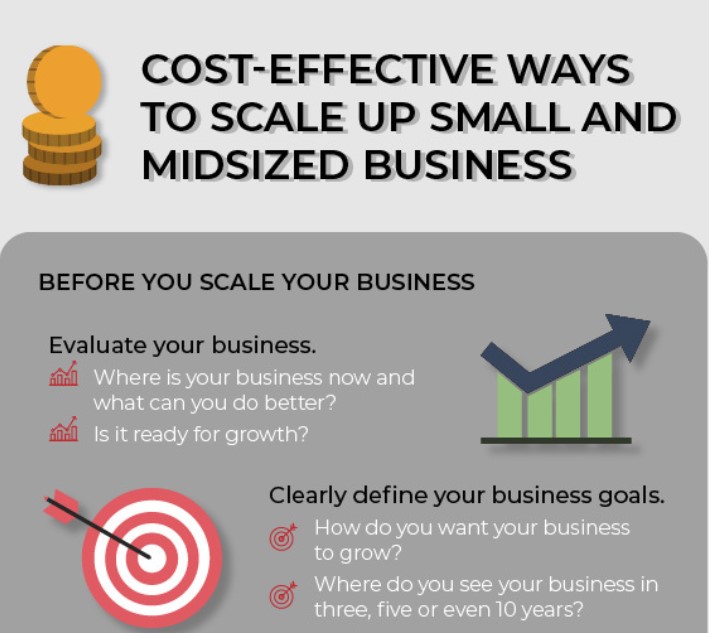Grow Small Business Successfully: A Step-by-Step Guide

Starting a small business is like planting a seed. You nurture it, water it, and hope it grows into a mighty tree. But how do you ensure that your business not only survives but thrives? This comprehensive guide will walk you through the essential steps to grow your small business successfully, from business development to profit maximization.
Understanding the Basics of Business Growth
Before we dive into the specifics, let's understand what business growth entails. Growing a small business isn't just about increasing revenue; it's about scaling operations, expanding your customer base, and enhancing your brand's reputation. It's a holistic process that requires strategic planning and execution.
Step 1: Define Your Business Goals
The first step in growing your small business is to define your goals. What do you want to achieve? Are you aiming for increased revenue, market expansion, or improved customer satisfaction? Clear goals provide a roadmap for your business development.
Setting SMART Goals
Your goals should be Specific, Measurable, Achievable, Relevant, and Time-bound (SMART). For example, instead of saying "I want to increase sales," say "I want to increase sales by 20% within the next six months." This clarity will help you stay focused and motivated.
Step 2: Analyze Your Market
Understanding your market is crucial for scaling your small business. Who are your customers? What do they need? How can you meet those needs better than your competitors? Market analysis provides insights that can guide your growth strategies.
Conducting Market Research
Market research involves gathering information about your target audience, competitors, and industry trends. Tools like Google Analytics, SurveyMonkey, and social media platforms can help you collect and analyze this data.
Step 3: Develop a Strong Brand
A strong brand is the backbone of any successful business. It's what sets you apart from the competition and makes you memorable to your customers. Branding is about more than just a logo; it's about your values, mission, and the experience you provide.
Building Brand Identity
Your brand identity should be consistent across all touchpoints, from your website to your social media profiles. It should reflect your unique selling proposition (USP) and resonate with your target audience.
Step 4: Optimize Your Operations
Efficient operations are key to scaling a small business. Streamlining your processes can help you save time, reduce costs, and improve customer satisfaction.
Implementing Technology
Technology can be a game-changer for small businesses. Tools like CRM software, project management platforms, and automation tools can help you manage your operations more effectively.
Step 5: Focus on Customer Experience
Customer experience is the new battleground for businesses. In today's competitive market, providing a superior customer experience can be the difference between success and failure.
Personalizing Customer Interactions
Personalization is key to enhancing the customer experience. Use data to understand your customers' preferences and tailor your interactions accordingly. This can lead to increased loyalty and repeat business.
Step 6: Leverage Digital Marketing
Digital marketing is a powerful tool for business development. It allows you to reach a wider audience, engage with your customers, and drive growth.
SEO and Content Marketing
Search Engine Optimization (SEO) and content marketing go hand in hand. By creating valuable content that ranks well on search engines, you can attract more visitors to your website and convert them into customers.

Step 7: Foster a Culture of Innovation
Innovation is the lifeblood of entrepreneur success. Encouraging creativity and experimentation within your team can lead to new products, services, and processes that drive growth.
Encouraging Employee Ideas
Create an environment where employees feel comfortable sharing their ideas. Implement a suggestion box, hold brainstorming sessions, and recognize and reward innovative thinking.
Step 8: Monitor and Adjust Your Strategies
Growth strategies are not set in stone. They need to be monitored and adjusted based on performance and changing market conditions.
Using Data Analytics
Data analytics can provide valuable insights into the effectiveness of your strategies. Use tools like Google Analytics to track key performance indicators (KPIs) and make data-driven decisions.
Step 9: Seek External Support
Growing a small business is a challenging task, and you don't have to do it alone. Seeking external support can provide you with the resources, expertise, and motivation you need to succeed.
Networking and Mentorship
Join industry associations, attend networking events, and seek mentorship from successful entrepreneurs. These connections can provide valuable advice, support, and opportunities for collaboration.

Conclusion
Growing a small business successfully is a journey filled with challenges and opportunities. By defining your goals, understanding your market, developing a strong brand, optimizing your operations, focusing on customer experience, leveraging digital marketing, fostering innovation, monitoring your strategies, and seeking external support, you can turn your small business into a thriving enterprise.
Remember, entrepreneur success is not a destination but a continuous process of learning, adapting, and growing. Embrace the journey, stay committed to your vision, and never stop striving for excellence.
FAQs
What are the key steps to grow a small business successfully? The key steps include defining your goals, analyzing your market, developing a strong brand, optimizing operations, focusing on customer experience, leveraging digital marketing, fostering innovation, monitoring strategies, and seeking external support.
How can technology help in scaling a small business? Technology can help streamline operations, improve efficiency, reduce costs, and enhance customer experience. Tools like CRM software, project management platforms, and automation tools are particularly useful.
Why is customer experience important for business growth? Customer experience is crucial because it directly impacts customer satisfaction, loyalty, and repeat business. Providing a superior customer experience can differentiate your business from competitors and drive growth.
What role does digital marketing play in business development? Digital marketing allows businesses to reach a wider audience, engage with customers, and drive growth through various channels like SEO, content marketing, social media, and email marketing.
How can I foster a culture of innovation in my small business? Encourage creativity and experimentation by creating an environment where employees feel comfortable sharing their ideas. Implement a suggestion box, hold brainstorming sessions, and recognize and reward innovative thinking.
By following this step-by-step guide and staying committed to your vision, you can successfully grow your small business and achieve entrepreneur success.
Belum ada Komentar untuk "Grow Small Business Successfully: A Step-by-Step Guide"
Posting Komentar